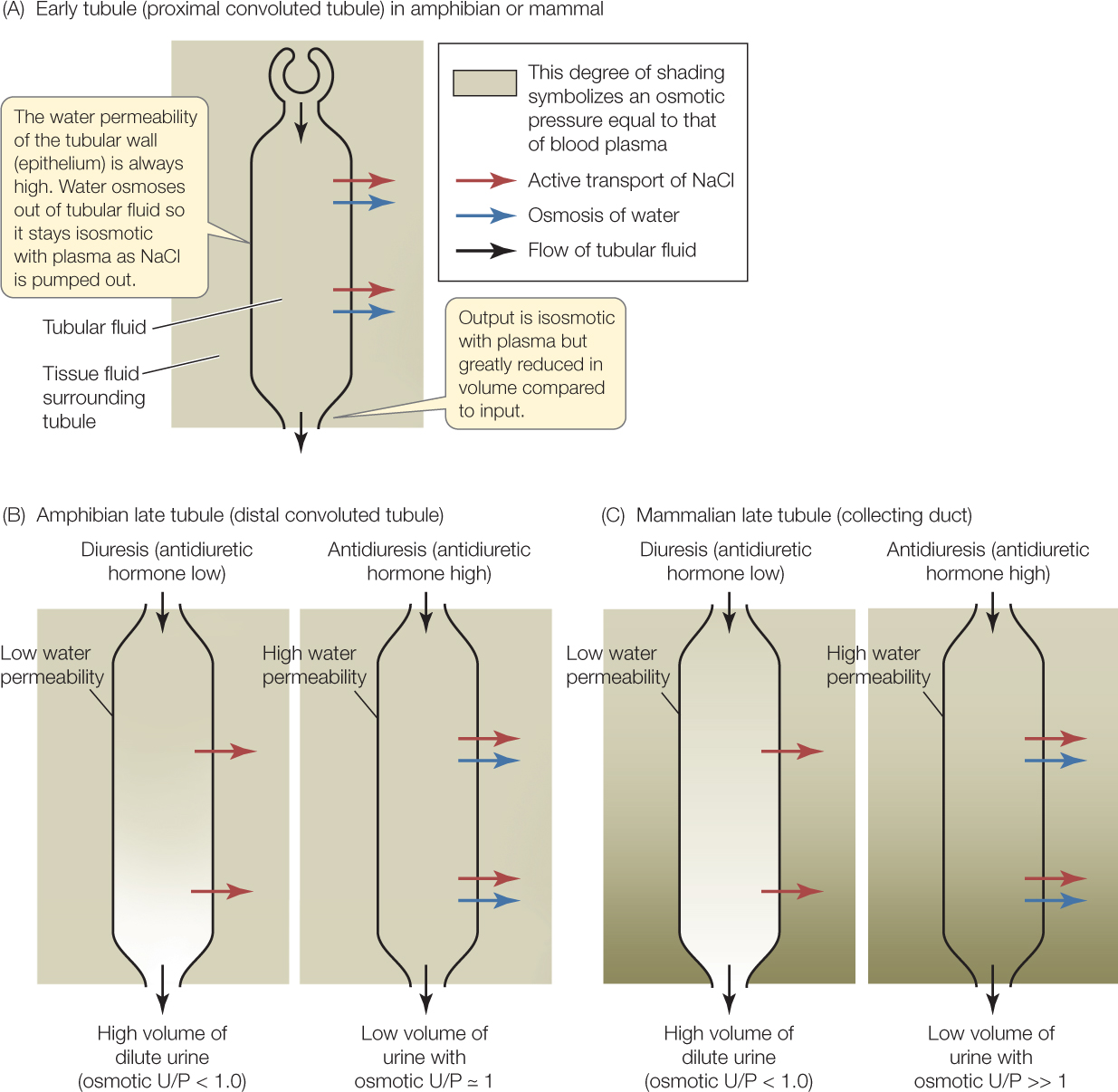
Figure 36.9: Amphibian and Mammalian Kidney Tubules Operate in Fundamentally Similar Ways The lightness or darkness of the shading represents the osmotic pressure in the fluids inside and outside the tubules, with darker shading corresponding to higher osmotic pressures. In both amphibians and mammals, the tubules can switch between producing a high volume of relatively dilute urine (diuresis) and a low volume of relatively concentrated urine (antidiuresis), under control of antidiuretic hormone (ADH). (A) The functioning of the early tubule is similar in amphibians and mammals. (B, C) The greatest difference between amphibians and mammals is that in amphibians the tissue fluids surrounding the late tubules are isosmotic with blood plasma (B), whereas in mammals these tissue fluids reach a far higher concentration than blood plasma (C). This difference explains why amphibians and mammals differ in their maximum urine concentrations.